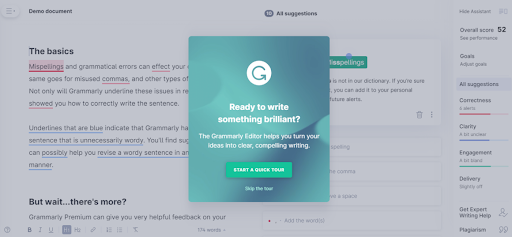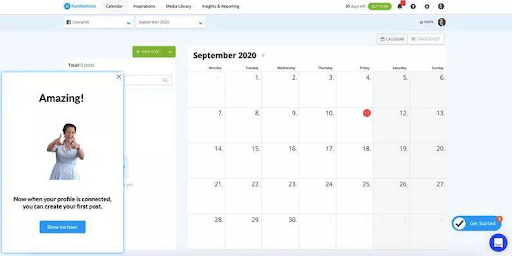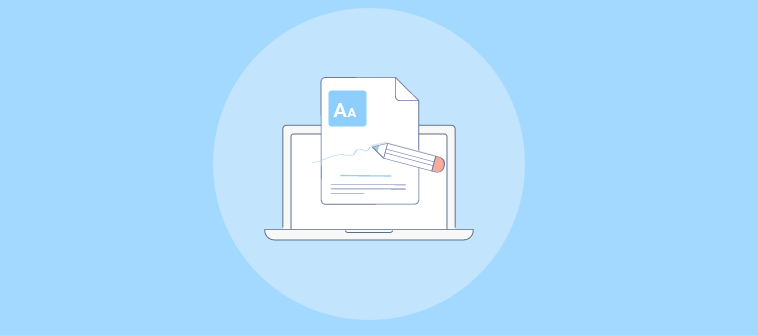There are billions of products on the market screaming for users’ attention and striving to make their own unique mark.
While most products promise to sweep users off their feet, only a handful are able to fulfill these promises. What’s important to note here is that despite brilliant features and functions, a product can fail, and even with average features, a product can be a huge success.
So, where does the difference lie?
The quality of your product onboarding process decides whether users will stick around or churn. This process is key to building a positive first impression that further sets a strong foundation for the rest of the users’ journey.
Let’s explore everything there is to know about product onboarding and how it can help you turn first-time users into product fans.
What Is a Product Onboarding Process?
A product onboarding process educates new users about your products and services. It familiarizes them with the features and benefits of your product and provides step-by-step guidance on how to use it effectively.
The process provides tremendous value to your users by supporting them at every step of product adoption and helping them solve specific problems. The aim of product onboarding is to ensure that things are not left to chance, and new users get to experience the true value of your product right in the first few uses.
Why Is Product Onboarding Important?
Did you know that 55% of users admit to having returned a product because they didn’t know how to operate it?
Product onboarding is crucial for businesses of all kinds. To understand the importance of product onboarding, you must be aware of its immediate and long-term goals.
Providing value to users and delivering a memorable experience are the two major short-term goals of this process. On the other hand, long-term goals revolve around improving retention and decreasing churn. A smooth onboarding process shows new users the right direction, making their journey seamless right from the start. Moreover, a good onboarding experience keeps users more engaged and invested in your product, thus boosting retention.
In a nutshell, the main benefits of product onboarding are:
- Improves conversion rate
- Boosts user engagement
- Lowers churn rate
- Decreases support tickets
Difference Between Product Onboarding and Customer Onboarding
Product and customer onboarding processes are similar yet different in various ways. Let us look at what differentiates them:
- Product onboarding is a process designed to help prospects or new users get acquainted with your product, its features, and its functions. On the other hand, customer onboarding is for existing users, where they learn how to troubleshoot problems and use the product to its fullest potential.
- The primary goal of a product onboarding process is to offer stellar experiences in the initial engagement, build a positive first impression and improve the product activation rate. Whereas the key purpose of a customer onboarding process is to increase satisfaction and retention rates.
- Product onboarding introduces new users to your product, whereas customer onboarding builds loyalty by providing increased value to existing users.
- Product onboarding is mainly taken care of by the product and marketing teams, whereas customer onboarding is managed by the customer success teams.
- Product onboarding is a relatively short process, whereas customer onboarding is a lengthy process that exists till the end of your association with the user.
6 Best Product Onboarding Practices
Now that we know what differentiates product onboarding from customer onboarding, let us look at some of the product onboarding best practices you can use to successfully onboard new users:
Set the Right Goals
For the onboarding journey to kick off on the right foot, you should be clear with your goals.
How exactly do you want to help new users?
Which features do you want to prioritize?
What route do you want users to take while working with your product?
What mediums do you want to use to make learning easier for users?
Ask yourself these questions to gain clarity on how you want the onboarding process to be and what goals you are aiming to achieve. You can also share surveys with potential users to identify their expectations and requirements. Their opinions will give you a clearer direction to follow for your product onboarding process.
Build a Strong Onboarding Team
A diverse team of individuals from different departments can collectively find and address user pain points and simplify the product onboarding process. Individuals from different departments can bring their unique knowledge to the table to build a foolproof onboarding process.
For instance, the product team will have the best insights into the technical aspects of your product. They are the ones who worked on your product, so their knowledge can add significant value to the onboarding process.
Similarly, the sales and marketing teams can help you frame the right messaging at every step of onboarding.
You can also roll in the customer support team as they are the ones who work on customer issues. They understand the pain points that can arise while working with your product, and therefore they can assist you in designing a holistic onboarding process that caters to users’ needs.
Provide a Product Tour to Guide Users
Product tours are used to guide users virtually through the essential features of your product. They are meant to be simple and to the point so that users can complete the journey of knowing your product with minimal effort.
Including a product tour in your onboarding process is a simple and effective way of enhancing the user experience. However, for your product tour to be impactful, it should be more interactive and less overwhelming.
That means it should guide users in a step-by-step way, taking them through all the essentials of your product. If the tour is overloaded with information, it will be too much to handle for first-time users, and they will most likely skip the tour completely.
Moreover, you can also personalize the product tour so that it is in alignment with a user’s specific needs and interests.
Grammarly shows us how to give product tours in the below product onboarding example.
Read More: How to Create Product Documentation

Solve Users’ Issues Instantly With a Knowledge Base
Creating a knowledge base is the best thing you can do to strengthen the product onboarding process.
An online knowledge platform encompasses everything from how-to videos and step-by-step guides to FAQs and detailed articles. It gives users a quick sneak peek into the product, supporting them through all the highs and lows of the process.
A well-structured knowledge base gives users all the context they need to understand your product and use it optimally. It can turn first-time users into independent problem solvers, thus reducing their dependence on your support team.
This eventually also reduces the volume of tickets reaching your help desk.
ProProfs Knowledge Base is a powerful product onboarding software that can help you empower users with self-service and help them solve problems instantly. This easy-to-set-up, fully customizable, and mobile-friendly software comes with powerful features that work together to bring your knowledge base to life.
Here’s a short video on how to create a stunning knowledge base for your product users using this tool.
Regularly Ask for Feedback
A product onboarding process is not set in stone. It needs continuous analysis and improvements to cater to the changing needs of your users. The process should be continuously tweaked based on user feedback to maintain its relevance.
Capturing feedback is the best way to learn about the issues users face during the onboarding process. It helps you better understand their pain points and modify the onboarding process accordingly.
You can use surveys to collect user feedback at strategic moments and use the responses to continuously improve the quality of your onboarding process. Additionally, you can leverage the power of analytics to uncover key insights into user engagement and behavior.
This will help you closely monitor the performance of your onboarding process and how well it is received by users.
Adopt Gamification for an Immersive Experience
Including games in the onboarding flow is a great way to make learning fun and interactive. While different individuals have different learning styles, gaming is something everyone loves.
It infuses an element of excitement into the process and keeps users motivated to win the game. The rewards users receive act as fuel to maintain engagement in the process and make the entire experience full of fun.
Human beings are naturally drawn toward fun-filled activities. Implementing gamification will give users a sense of fulfillment every time they complete a benchmark. By the time the process ends, users are already in love with your product.
You can make a quiz to test the learning of users, use interesting character avatars, and even include progress bars in the process. These are some of the ways to gamify your product onboarding and create memorable experiences.
Here is an excellent example of gamification done right by Kontentino. This social media management tool displays a dancing GIF when a user successfully completes the first step of the onboarding process.

FREE. All Features. FOREVER!
Try our Forever FREE account with all premium features!
Increase User Engagement & Retention With Product Onboarding
You might have the best product in the world, but that doesn’t guarantee a large and loyal user base. While there are various elements that contribute to the success of a product, the most important one is onboarding.
How seamlessly you onboard new users set the pace for their journey with your product. Onboarding plays a key role in building a strong first impression that further decides whether users will stick or leave.
For successful product onboarding, you can follow simple best practices like implementing gamification and providing users with interactive product tours. You can also create an online knowledge base and capture user feedback at every step of the process.
 Tips
Tips
We’d love to hear your tips & suggestions on this article!
FREE. All Features. FOREVER!
Try our Forever FREE account with all premium features!

 We'd love your feedback!
We'd love your feedback! Thanks for your feedback!
Thanks for your feedback!







